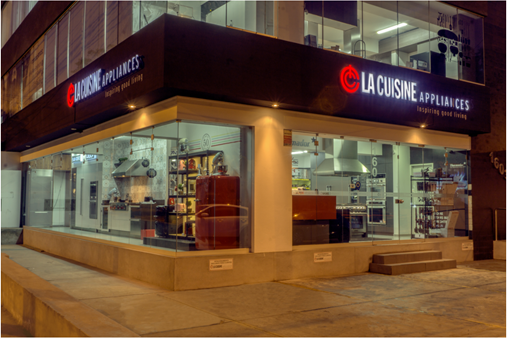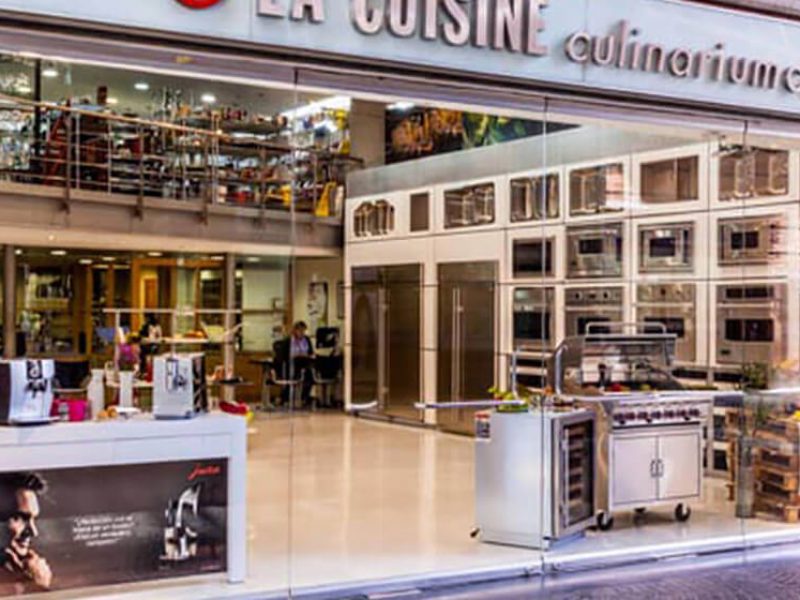
Our Company
Locations
Contact Us
Newsletter
Sign up to receive email updates on the latest products, collections and campaigns.

The White Bow is a building in Valencia, Spain that shows how architecture can use anything, even the nautical. This work, which is the result of the synergy between the naval architect Julio César Galiana (Graphenano) and the architecture studio Onside, is a clear example of the new shapes, concepts, and materials that the architecture of the future will use.
Located in the industrial area of Picassent, this building was a commission that Gazechim Composites Ibérica made to the aforementioned team, with a single purpose: to highlight the technological advances of nautical architecture and construction, using the usual raw materials of the company that owns the building. Thus, Gazechim Composites, pioneers in the introduction of GRP type composites in the construction world in Spain, turns its headquarters into an example of what’s possible when betting on smarter constructions.
Setting the example at home
The company with a solid track record and representation in 36 countries, reached a milestone in 2020 by presenting the world’s first graphene ship in collaboration with Graphenano. Therefore, the White Bow can be seen as the continuation of its commitment to the introduction of new materials to different areas.
This building is in itself a technological adventure of Gazechim Composites Ibérica because it allows them to show how GRP composites can contribute to the world of construction. So, it doesn’t come as a surprise that their audacity didn’t go unnoticed: the project won the first prize of the JEC Forum Chicago Innovation Awards in the category of construction, and the NAN Award in the category of techniques and constructive solutions.
Carlos Bonet and Carlos Balada, architects of Onside studio, explain that initially when they designed White Bow, they aimed to create a building with a material that, until very recently, was inconceivable in construction, but that once it was used, brought a strong dose of innovation to the sector, showing the possibilities that PRFV compounds can offer to architecture.

The world’s largest composite cantilever
As if breaking all preestablished parameters in terms of shapes and construction materials wasn’t enough, White Bow has the world’s largest cantilever made of the latest generation of graphene-based nanotechnological composites. The canopy over the loading dock of the logistics center consists of a self-supporting, double-curved, 340-square-meter, seamless structure. This makes it unique not only because of its dimensions but also because it’s the first application in the construction industry to use this carbon technology in the polymer matrix.
“Our headquarters is proof that smarter construction is possible, focusing on such important aspects as strength, durability, innovation and sustainability. The use of graphene improves the mechanical properties of composites, so there’s no doubt that these two materials represent the present and the future in many areas,” says Miguel Ángel Medina, director of Gazechim Composites Ibérica.
A sustainable bet
With sustainability weighing heavily in everything related to architecture, one of the great design challenges of this project was the introduction of recyclable and sustainable elements. Thus, by incorporating the use of Kerdyn™ Green 100% recycled PET core in the construction, which has excellent mechanical properties, they not only managed to create a building that generates a low carbon footprint on the environment but also contributed to reuse more than 12,000 PET bottles recovered from the oceans.
White Bow also includes other elements that have been nanomodified with graphene, such as the 880 linear meters of GRP profiles distributed along its façade, which form a system of louvers or slats deliberately designed to optimize the building’s energy response to solar radiation.
After reading all this you may be wondering: “3D laser printers, nautical materials, recycling… What will be the next thing that architecture will bring?”. Well, we share that curiosity with you

Sign up to receive email updates on the latest products, collections and campaigns.
Carrera 9 Nº80-45
Bogotá D.C., Colombia
Monday to Friday: 11:00 a.m. - 07:00 p.m.
Saturday: 11:00 a.m. - 06:00 p.m.
(+571) 432.7408/7493

Calle 77 #72-37
Barranquilla, Colombia
Monday to Friday: 08:00 a.m. - 06:00 p.m.
Saturday: 09:00 a.m. - 01:00 p.m.
(+57) 605 352 0851

Edificio La Cuisine
Costado Suroeste, C.C. La Paco
Escazú, Costa Rica
Monday to Friday: 09:00 a.m. - 05:00 p.m.
Saturday: 10:00 a.m. - 04:00 p.m.
(+506) 4000.3555

Galerías de Puntacana No. 51
Punta Cana, La Altagracia, R.D.
Monday to Friday: 09:00 a.m. - 06:00 p.m.
Saturday: 10:00 a.m. - 01:00 p.m.
(809) 378.9999

C/Rafael Augusto Sánchez No.22,
Piantini, Santo Domingo, R.D.
Monday to Friday: 09:00 a.m. - 06:00 p.m.
Saturday: 09:00 a.m. - 01:00 p.m.
(809) 378.9999

18187 Biscayne Bvld., Aventura
FL 33160
Monday to Friday: 10:00 a.m. - 06:00 p.m.
Saturdays by appointment.
(786) 322 5432
www.lacuisineappliances.com
sales@lacuisineappliances.com

3232 Coral Way,
Miami FL 33145
Monday to Friday: 10:00 a.m. - 06:00 p.m.
Saturday: 10:00 a.m. - 03:00 p.m
(305) 442-9006
www.lacuisineappliances.com

2005 NW 115th Avenue
Miami, FL 33172
Monday to Friday: 09:00 a.m. - 05:30 p.m.
Saturday: Closed
(+1) 305 418.0010
info@lacuisineinternational.com

Obarrio. Av. Samuel Lewis,
Addison House Plaza,
Local No.11, Panamá
Monday to Friday: 09:00 a.m. - 06:00 p.m.
Saturday: 10:00 a.m. - 04:00 p.m.
(+507) 265.2546/2547

Av. Caminos del Inca 1603,
Santiago de Surco, Perú
Monday to Friday: 10:00 a.m. – 07:00 p.m.
Saturday: 10:00 a.m. – 01:00 p.m.
(+511) 637.7087

Centro Comercial San Ignacio, Nivel C, local No.5
Caracas, Venezuela
Monday to Saturday: 10:00 a.m. – 07:00 p.m.
(+58) 212 264.5252
(+58) 414 018.5352 (Wholesale)
ventas@lacuisineappliances.com

Complejo Pradera Ofibodegas No.13,
20 calle final Z. 10 Km. 6.8 Carretera a Muxbal,
Santa Catarina Pínula, Guatemala
Monday to Friday: 08:00 a.m. - 05:30 p.m.
Saturday: 09:00 a.m. - 12:30 p.m.
(+502) 6671-3400
